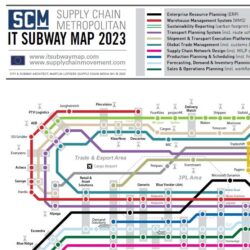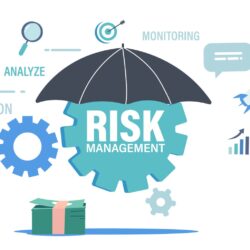Improved purchase order visibility gives Jabil more grip on disruptions

How can you create supply chain resilience when you have more than 27,000 suppliers? Contract manufacturer Jabil was looking for a way to automate communication with all its suppliers – even those it only uses a few times a year. Jabil’s Alan Brown shared his experiences of e2open’s solution in a Supply Chain Media webinar. “I’m keen to avoid the ‘golden screw’ problem: when a missing part causes the production process to stagnate.”
By Marcel te Lindert
Alan Brown described Jabil as one of the world’s largest companies that most people have never heard of. With more than a hundred factories across 30 countries, the company makes a variety of products ranging from consumer electronics to network equipment, and from medical products to automotive parts. Its customers include around 300 well-known global brands. “We offer them a broad range of services, from product innovation and design to delivery and after-sales service,” said Brown, Vice President of Supply Chain Transformation at Jabil.
The huge diversity in products and customers creates an extremely complex supply chain. Jabil’s factories handle 1.5 million different parts and materials from more than 27,000 suppliers. The supply flow is not always flawless, Brown admitted. “In recent years, we’ve seen a growing number of disruptions resulting from climate change and geopolitical developments. In addition, new products are being launched increasingly rapidly and disrupting our customers’ markets. Plus consumer behaviour is becoming more erratic. Therefore, it’s crucial for us to build a resilient supply chain so that we can act quickly and minimize the impact of new disruptions on our operations and on our customers.”
The golden screw
The first step towards supply chain resilience is to identify the pain points and risk factors. Because of its extensive supply chain, this was a major challenge for Jabil, Brown explained: “To give you an idea, we have 2.8 to 3.0 million open purchase order lines at any given time. On an annual basis, we conduct more than a billion transactions with suppliers. We use all those parts and materials to make 375,000 different finished products, which we then have to ship to 10,000 different locations. Our job is to make sure that those finished products arrive on time to avoid jeopardizing our customers’ revenue goals.”
Brown is keen to avoid the ‘golden screw’ problem: when a single missing part prevents the completion of the end product. “No matter which part from which supplier, if it’s missing it causes the production process to stagnate. Therefore, when pursuing resilience, it’s important to not only focus on your biggest suppliers, but also on the ‘long tail’ of suppliers that you may only use once or twice per quarter or per year. Companies often focus on automating transactions and sharing forecasts with the top 20% of their suppliers. But if you don’t do that with the other 80% too, you still run the risk of disruptions.”
Automatically generated e-mails
Jabil uses e2open’s solutions to communicate with its suppliers. “Communication was a big challenge for us. We need suppliers to send us information about the status of our purchase orders. We already had good digital integrations with our biggest suppliers, but many smaller suppliers are unable to set up EDI links. This meant we had to manually filter the purchase order status data out of e-mail messages and enter it into our ERP system.”
The most common approach is to set up a portal so that suppliers can connect using their own systems in order to confirm purchase orders and update status data. “But from experience, we know that some suppliers are unwilling to work with a portal – especially those who we only use a few times a year. E2open’s tool allows us to automatically generate and send e-mails, including attachments and links that suppliers can click on to confirm our orders. The tool also has a dashboard showing us which suppliers don’t respond on time, so we can take action. This solution has significantly improved the quality of supplier data, giving us greater visibility into our supply chain risks.”
Collaboration and decision-making
But merely improving and automating communication with suppliers is not enough to achieve supply chain resilience, he said. “The first step is to create supply chain visibility. What is the status of purchase orders and transportation orders? How can we ensure that we know where all parts and materials are at all times? The next step is to identify and reduce risks based on that data. We use network models to determine the potential operational impact of those risks, and we analyse different scenarios to see if we can reduce the risks or adjust our planning to avoid them.”
Another crucial component of a resilient supply chain is effective collaboration, both internally and externally. “Think about the collaboration between your procurement teams and planning teams, for example. If that runs smoothly, they can make decisions faster. But think about your collaboration with suppliers and customers too,” Brown stated. “In addition, the quality of decision-making is important. We use analytics to optimize our supply chain based on the huge amount of data: what are the optimal stock locations and inventory levels?”
Simchi-Levi’s Risk Exposure Index
To measure its supply chain resilience, Jabil uses MIT professor David Simchi-Levi’s Risk Exposure Index: how long does it take for the supply chain to recover from a disruption? And according to Brown, the company’s performance has improved: “The main benefit of investing in supply chain resilience is that we have better visibility into the status of purchase orders and can therefore make better decisions. This also allows us to make more accurate commitments to our customers. And because we see disruptions coming sooner, we have more time to respond before those disruptions actually occur.”









